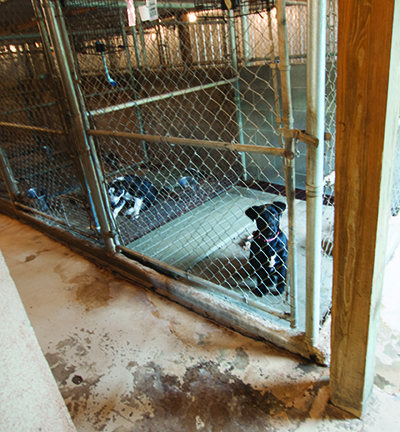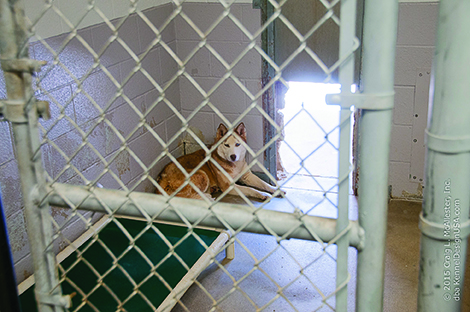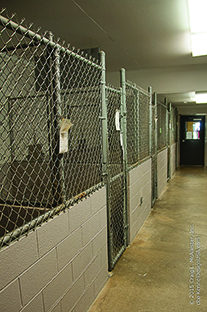
Simplify Your Cleaning Through Design
By Craig McAllester, Kennel Designer
I’m on an airplane heading to Kentucky to look at the conditions of an animal shelter that has fallen into disrepair. Next week, I’ll be in Philadelphia to see a kennel that has run out of space. I travel like this, every now and again, when a client has a concern about their kennel, shelter or animal hospital and they need help to remedy troubles that plague their building.
Sometimes, these troubles are minor where a simple fix may answer the call.
Other times, years of abuse may have taken their toll on the building.
Perhaps they need to renovate, expand, or, perhaps it’s too far-gone and maybe the building needs to come down and they need to start anew. Each project brings a unique set of circumstances, and from the pictures I’ve seen thus far, this trip will be no different.
More often than not, the troubles relate to one of these:
- Water
- Drainage
- Air Quality
- Mold Growth
- Cleaning
The constant cleaning in a kennel is really hard on the building. If not handled properly, water will quickly find its way into the walls or other places and cause serious damage or promote mold growth.
A number of years ago, I was asked if there wasn’t an easier way to handle the daily task of cleaning. Perhaps something like a fire sprinkler system, they explained, to make their new kennel “self-cleaning”.
Do you remember the television series Tool Time? On one particular show, Tim built, what he called “The Man’s Kitchen.” Essentially, it was a giant walk-in dishwasher that contained an entire kitchen. When the meal was finished, everyone would get up and leave the room, lock the door, and Tim started the Man’s Kitchen cleaning cycle. The entire room was washed and dried, from top to bottom, the pots and pans, dishes, countertops, furniture, everything, and all at the push of a button!
Well, if you are reading this article, then I think you probably know that there is no such thing as a self-cleaning kennel. In fact, a kennel is a lot of work. Through proper design, however, the task of cleaning your kennel can be made much easier. By eliminating the cleaning water from the building right away, you can minimize the chance of mold growth and reduce the chance of rust, which helps to keep the air in the building free of moisture too.
A lot of the troubles I see have been caused by poor design that was ‘engineered to fail.’ Sometimes I see a detail only to say, “What were they thinking?” Likely, it was built in good faith, but perhaps using a method for a different use, or built by someone unfamiliar with the special needs of an animal care facility.
The very first thing I notice when I walk into any kennel is the air quality.
That first breath of air, as I walk through the door, tells the ‘tail’. If the building has a strong animal odor or if the air feels heavy or even wet, then there’s a chance that the mechanical system is not doing its job. If the drains remove the water from the floor quickly, that limits the amount of work the mechanical system has to do in getting rid of the water that has evaporated into the air.
This in turn limits the amount of mold growth that can occur; it improves the air quality; and all that limits the amount of work needed to keep the kennel clean.
If odor is strong in the human spaces too, then it’s likely that the air in the animal areas is being recirculated through the human spaces of the building rather than being exhausted to the outside. Perhaps no air is being exchanged at all—something that needs to take place to remove evaporated water from the building.

Fig 1) This picture is of a kennel that was built less than eight years ago. The concern was regarding moisture in the building. A kennel in distress where standing water has caused considerable damage.
Upon first observation, I see a high watermark on both the floor and the wood post. This indicates that water has been ponding on the walkway in front of the kennel stall. I see the masonry wall at the back of the stall is unfinished. Both the standing water on the floor and the water that has been soaked-up by the masonry wall will evaporate into the air. This increases the humidity level within the building.
The kennel enclosure has a trench drain at the back of the stall, but the water on the sidewalk cannot flow to the drain because of a concrete dam directly in front of the gate.
Perhaps, their ‘dam-thinking’ was to create a shower-pan type enclosure in an effort to contain the water inside the kennel or perhaps to keep urine from running out, onto the walkway. They failed to consider that any standing water on the walkway, beyond the fence, would not be able to get to the drain. A human shower normally has no water beyond the shower door or curtain. A kennel has water everywhere and it must find its way to the drain!

Fig 2) Here is another kennel, but this building is 34 years older than the one in Fig 1. This kennel had a very mild moist feel, but I arrived just after cleaning time.
The kennel had minimal wear and it was mostly on the enclosures. For the most part, the wall and floor finishes have been well maintained over those years. A drainage system in each kennel collects the water. The floor slope permits water to be eliminated quickly. That way only a little water remains and the mechanical system takes care of any residual water.

Fig 3) This same kennel is showing only minor ware after forty-two years of holding animals. The heavy gauge chain-link has held-up extremely well over the years. Most of the fencing offered today is made from considerably lighter gage fabric and the pipe wall-thickness is much thinner too.
I would say that most often, when a kennel is undergoing an interior renovation, they are doing so because one of these causes:
- The chain-link enclosures are worn-out.
- The concrete floors need to be refinished.
- The masonry walls need to be refinished.
- The drains are not working or are warn-out.
Buying the right materials, right from the start, will save you a lot of money over the long haul, and simplify your cleaning for years to come.
Craig L. McAllester, President, Craig L. McAllester, Inc, kennel designer, has been designing veterinary hospitals, boarding kennels, animal shelters, police, military, and U.S. Department of HomeLand Security/Boarder Patrol working dog kennels, here in the United States of America, and in countries around the world, since 2003. Craig may be contacted at 877-234-2301. Email: [email protected] Website: www.KennelDesignUSA.com


